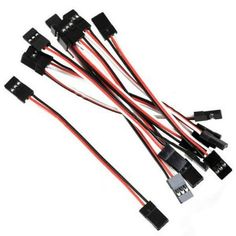Introduction
Ground pins in wire harnesses and cable assemblies play a crucial role in ensuring the safe and reliable operation of electrical systems. Proper grounding reduces electrical noise, prevents voltage spikes, and ensures the system’s stability by providing a return path for current.
Purpose of Grounding in Wire Harnesses
Grounding is essential for:
- Safety: Prevents electric shock by directing fault currents to the ground.
- Electromagnetic Interference (EMI) Reduction: Helps mitigate noise in signal transmission.
- Voltage Regulation: Stabilizes the voltage levels in the system.
- Electrostatic Discharge (ESD) Protection: Prevents damage to sensitive components by discharging static electricity.
Types of Grounding in Cable Assemblies
- Chassis Ground: Connecting the ground wire to the metal frame or body of a device.
- Earth Ground: A physical connection to the earth for large systems.
- Signal Ground: Used to reduce noise in data and communication lines.
Ground Pin Configurations
Ground pins are commonly found in connectors and cable assemblies and are typically:
- The longest pin to ensure it makes contact first.
- Made of conductive materials like copper or brass.
- Marked with a specific symbol to distinguish them from other pins.
| Connector Type | Ground Pin Location | Common Uses |
|---|---|---|
| D-Sub Connectors | Pin 1 or the shell | Computer interfaces, industrial uses |
| Circular Connectors | Center or outermost pin | Aerospace, military applications |
| Automotive Connectors | Typically metal casing or Pin 31 | Vehicle electrical systems |
Standards and Regulations
- IPC/WHMA-A-620: Industry standard for wire harness assembly.
- ISO 14644: Guidelines for automotive grounding.
- MIL-STD-464: Military standard for grounding and EMI control.
Troubleshooting Grounding Issues
- Symptom: Intermittent signals or noise.
- Cause: Poor ground connection or broken ground wire.
- Solution: Inspect connectors and repair any faulty connections.
- Symptom: Voltage spikes or unstable readings.
- Cause: Ground loops or shared ground paths.
- Solution: Reconfigure grounding paths to eliminate loops.
- Symptom: Equipment failure due to static discharge.
- Cause: Inadequate ESD protection.
- Solution: Install proper grounding and shielding.
Conclusion
Proper grounding is vital for the reliability and safety of wire harnesses and cable assemblies. By following best practices, adhering to standards, and ensuring correct ground pin configurations, you can mitigate electrical issues and enhance the performance of your system.


Comments are closed